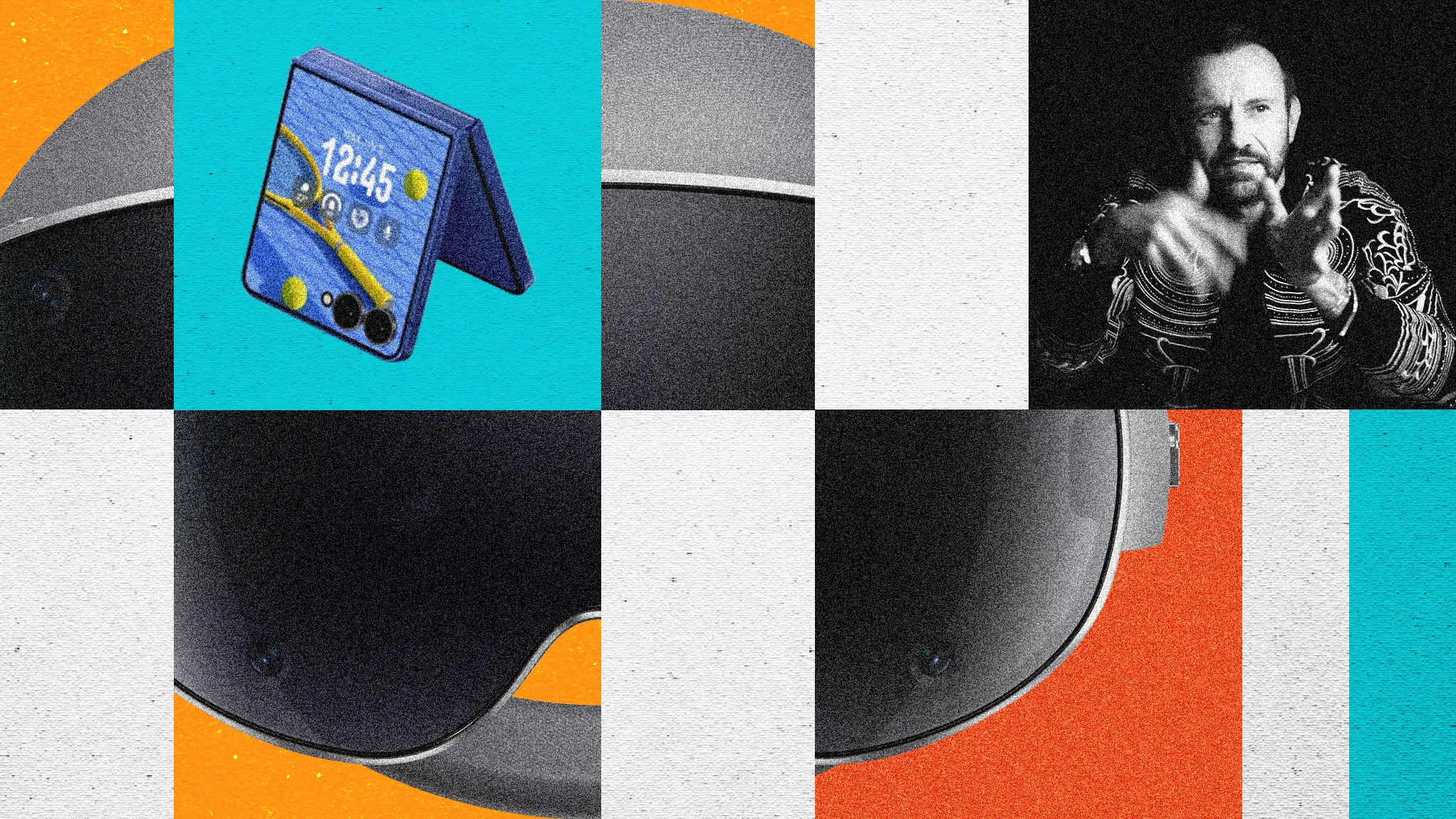Copyright wired

That’s not to say there haven’t been improvements in the last decade, and the occasional flashes of promise—most notable in its collaborations with external designers, like the Bouroullec brothers, who fashioned the Serif TV for the South Korean company. But that hasn’t stopped complaints of boring and unoriginal design, both internally and externally, and an inertia when it has led, leaving other companies to close the gap. Being defined by performance over personality has hardly done Samsung’s bottom line any harm—it recently regained its lead from Apple in global smartphone market share and has been the global leader in TVs for almost two decades. But, in 2025, it looks there’s finally a clear desire from Samsung to bridge the gap between form and function, by giving design the focus it’s been lacking for far too long at the company. Back in April, Samsung hired Mauro Porcini, its first ever chief design officer. Porcini has spent more than 20 years building award-winning design teams at 3M and PepsiCo, most recently leading a successful global rebrand for Pepsi—the company’s first in 14 years. For a company as big as Samsung, this hire feels late. Apple created the same position for Jony Ive a decade ago, around the same time it was reported that innovation at Samsung was being stifled beneath layers of management. With those structural issues supposedly unpicked, Samsung now has work to do—something Porcini is keen to acknowledge. Late to the Party “We are in a moment of change, where the way people interact with any kind of machine or electronic device is going to be radically different in the coming years,” Porcini tells me. “These machines will change the way people live, work, and connect with each other—the way people fulfil their needs. For a company like Samsung, having design at the top, involved in the way you define the future of the portfolio based on those needs—it’s more important than ever.” The march of AI is, of course, a helpful hook upon which to tie this long overdue move, but Yves Béhar, the founder and principal designer at Fuseproject who worked with Samsung on The Frame TV, tells me this has been years in the making, and something Samsung had initially looked externally to help put the wheels in motion. “When we started working with Samsung on The Frame [released in January 2017], the CEO at the time, HS Kim, came to us and said—look, we want to transform ourselves from a consumer technology company, into an experience business,” says Béhar. “So we helped them set some principles around that, and worked on getting that message out into the business—of what it means to think about experience versus tech. This is exactly what we did with The Frame TV.” Why the role wasn’t brought internally much earlier, Béhar is unsure, but he says that it will be key in helping Samsung navigate the unavoidable impact of AI on consumer tech. “The internal leadership role in design is very important for that experience message to continue to be propagated, and for it to be really front and center on an ongoing basis. [Design] is not a hobby anymore when you have a leader constantly advocating for better.” One of the biggest challenges for Porcini is the sheer scale of Samsung’s business. With design teams all over the world, a product portfolio that stretches into the hundreds, if not thousands, and a global customer base, there are a lot of things to bring into alignment. But what does that look like from a design perspective? Porcini clearly has an appreciation for the beautiful things in life. Almost an antithesis of Ive’s bootleg jeans and baggy jumpers, he is impeccably tailored, dressed in all black, but with the green stripes of a pair of Gucci x Adidas heeled boots swatting away any possible illusion of “corporate.” While he wants to create desirable products, he tells me his focus with Samsung’s design goes beyond the physical. “We want to connect everything into one story, but creating the same design language in a mobile phone as in a refrigerator is very difficult,” he says. “Instead, the design story we want to tell is of a consistent experience across all our devices, alongside personalization and customization through the use of AI. I need to make sure I deliver to you the best refrigerator, the best mobile phone, the best television, that is perfect for you in your environment—we don't want the visual language to constrain the possibility of delivering that.” Stalemate Design Solution While one universal design language is not the goal, Béhar agrees with Porcini that an “experience language” is much more suitable. Gadi Amit, president and principal designer at NewDealDesign, also suggests this is where Samsung may need to focus the most. “Samsung is second to none, honestly, in their ability to execute on the hardware engineering level," Amit says. “But they have had difficulty with the software and services side. You can’t think about Apple products without thinking about services like iCloud—that is not the case for Samsung. That whole ecosystem is more important today than ever—the three-pronged approach of hardware, software and services—and so this is a huge undertaking for Samsung. “I would assume that is a key focus [for Porcini], ” he adds. “But you need to be very savvy, technologically speaking, to know how to create these links.” However, it’s clear that aesthetics do still matter. Joe Public won't care about the superior build quality if the hardware looks like a dog's dinner, or, perhaps worse still, like it's copying a rival. Last year it was reported that Samsung chairman Lee Jae-yong was angered by the company’s mobile division, after press and social media comments compared the new Galaxy Watch and Galaxy Buds to existing Apple designs. Samsung isn’t the only brand facing these criticisms, but how does Porcini intend to tackle them? He agrees the industry has been “homogeneous, for the past 10 years at least,” but says he believes that being bold in your approach, and ultimately understanding that not everything you try will work, is the only way to push through any period of stalemate. “The approach that has worked for me over the years is the one of finding different ways and different platforms to propose different ideas to the market. And I use the word propose on purpose. It was something a designer friend of mine, Gismondi, used to say—we don't give solutions to people, we make proposals. Then you see how the people react,” Porcini says. He gives the example of Samsung’s collaboration with Béhar on The Frame TV, a television that hangs on the wall and can display artwork when switched off to look more like a picture than a television. It was an outlier when it was first released in 2017, and didn’t actually review all that well due to its more middling picture performance. But eight years, and several generations on, it has inspired a whole category of more lifestyle-led TVs from its competitors, as well as becoming one of Samsung’s best-selling TVs. “You don’t change industries by top down, changing everything," Porcini says. "You test ideas, see where they go, and you learn from it. The wrong approach when they don't work is to call them failures. The right approach is to call them for what they are: experiments.” Stop Playing Safe But does Porcini feel like he has the freedom for these kinds of experiments on a world stage at Samsung? To an outsider, it certainly appears that Samsung plays things more safely. Even with its head start in the foldable phone market, it has focused on refinement rather than innovation, giving Chinese brands such as Honor and Huawei the opportunity take the lead on new ideas and form factors. So does Samsung want to take risks? “Look, every corporation, in the ideal world, wants the perfect product that will sell billions of pieces tomorrow morning,” Porcini says. “But if you have the right leaders, they understand that's not possible. Before joining Samsung, I already saw this was a company that was comfortable with experiments—like it did with The Frame. So I think they will [let me]—this is what I'm feeling, what I'm seeing, what I've been told.” Porcini doesn’t sit on the board at Samsung, instead working as a member on the executive team and reporting into the CEO. It’s similar to the position Ive found himself in at Apple, and interestingly was reportedly one of the reasons for his departure, after a shift in board members changed the company’s approach to design. But this doesn’t have to be the case. Design can find a place within the leadership if there’s the corporate will. Jaguar Land Rover’s chief creative officer, Jerry McGovern, is a prime example here. While Samsung is clearly not keen on that level of commitment, Porcini remains confident that the company is dedicated to the role he is first to occupy long term, and is bullish about his ability to influence wider strategy along the way. “Samsung went full-in on this, they put this position at the top,” he says. “There is no layer between me and the CSO (chief strategy officer), and it’s a big bet for the company. The role is a guarantee that design has a spot at the table, that ensures this becomes a design-driven company—not just in the design team, but across R&D, procurement, HR, finance, every single part of this company.” Evolutionary Disruption When I ask Porcini if he’s looking to come into the company as a disruptor, something that is so often spoken about—even expected—when a new role like this is created, his response is much more measured. “What I have learned over the years is to understand how to be a disruptor without destroying things. It's super important for any innovator in any company, any change agent, to profoundly understand what made that company a success before you; before arriving arrogantly thinking that you know better,” he says. “You need that ability to understand the company, the strengths, and then bring in something that is different, new. That's what I'm working on right now.” As for what that actually looks like, Porcini is tight-lipped on specific product areas he is considering, but discusses a roadmap that he sees as evolutionary first, before form factors start to change and entirely new categories are born. While this sounds like a gradual approach that won't ruffle corporate feathers, it's also far from a radical rethink. “If you think just about the potential of the technology in our robot vacuums,” he teases, “there is an entire world of moving devices in your home that we can develop. There's so much that we can imagine there, and we will build that.” With product pipelines as long they are, and with such a seemingly cautious approach, it might take time before we see Mauro’s impact on Samsung’s products and experiences. However, he is actively paving the way for what’s to come next and—reminiscent of design duos like the recently reunited Ralph Groene and Panos Panay, who reinvigorated design at Microsoft with the Surface tablet—he is looking for anyone in the company who can help him build that vision. “What I have learned is the importance of finding what I call the ‘co-conspirators’—the other people in the business that want to drive change. Because those are the people like me, that want to innovate, they want to evolve, they want to change the world. Right now, I’m hunting for those co-conspirators. And when you find them, that’s when it gets really fun.”



